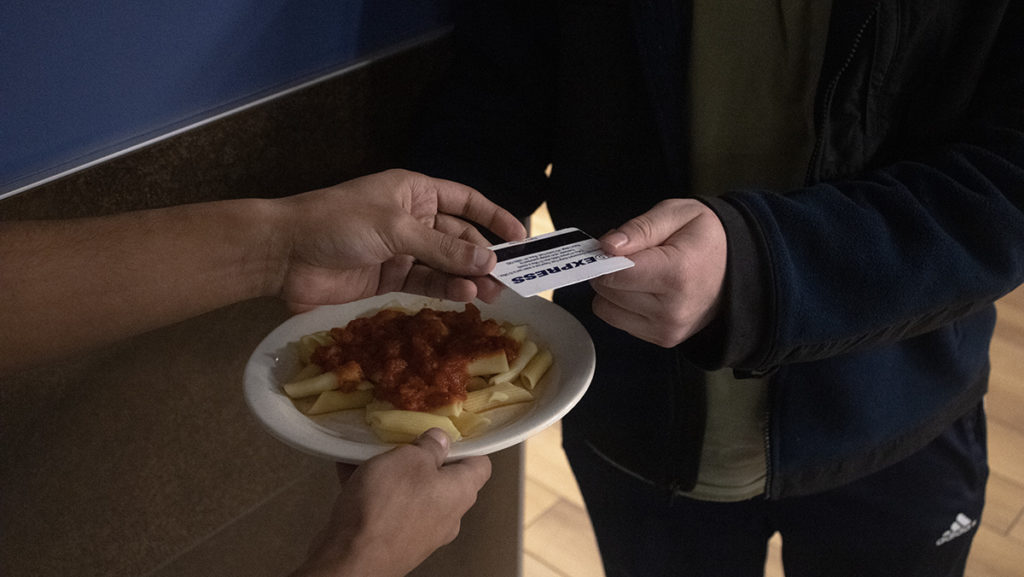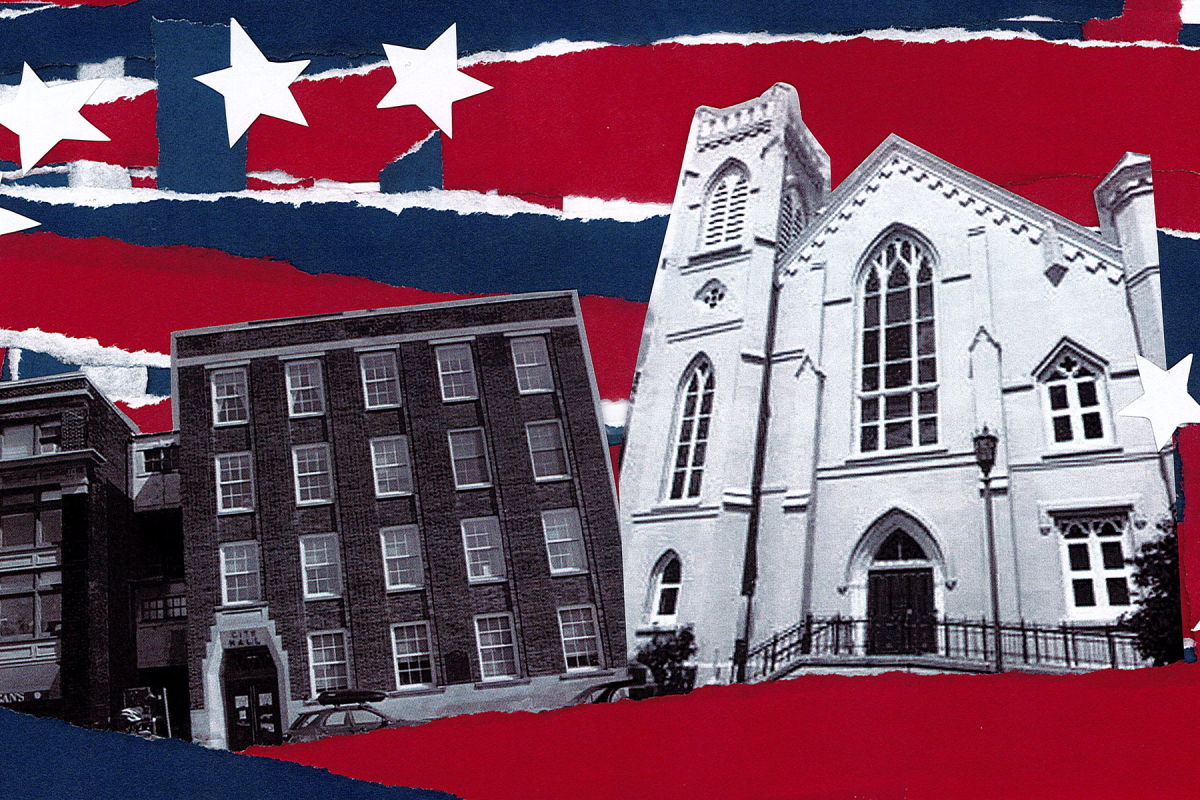Changes have been proposed to how dining at Ithaca College will operate in the 2023–24 academic year, with the inclusion of new meal plans and a new exchange system.
The changes were announced in the “Dollars and Sense” presentation Feb. 17 by Jeff Golden, associate vice president of Auxiliary Services. Golden said the college is planning to introduce an exchange system where a student can “exchange” a meal swipe for a meal of equal value at different eateries on campus, including the Towers Eatery and any cafes on campus. The Food Court, Chick-N-Bap and the Ithaca Bakery are not included in the exchange system.
“The exchange piece is really important,” Golden said during the presentation. “It means that you can more or less go just about anywhere with the exception of the bakery and the food court; you can use your meal plan wherever you are.”
Golden said the college is planning to introduce three new meal plans for residential students with different numbers of exchanges a student can buy. Each meal plan comes with 24 meals a week, but the number of exchanges varies. The cheapest plan comes with seven exchanges per week at $6,870 per year, the second cheapest comes with 14 exchanges per week at $7,300 per year and the most expensive plan comes with 21 exchanges per week at $7,800 per year. The current residential plan costs $6,868 a year and is an unlimited meal swipe plan.
“If you choose as a student that you don’t really want to ever go to the dining hall, then you can,” Golden said during the presentation.
All of the plans come with 200 Bomber Bucks, 30 bucks less than what was offered in the previous residential plan. Reginald Briggs, associate director and interim head of Dining, said the exchange program offers increased opportunities to eat at different places on campus because students can use exchanges instead of spending Bomber Bucks.
“Before, if you didn’t have time [to eat at a dining hall] or Campus Center was crowded, the only recourse you had was to use Bomber Bucks,” Briggs said. “It doesn’t take very long if you get a $12 lunch to blow through $230. You shouldn’t have to use your Bomber Bucks to eat a meal on the new plan, so even though the number [of Bomber Bucks] comes down slightly, the value of your meal plan in theory went up a lot.”
Briggs said the resident meal plan that is currently the only option offered to students who live on campus in residence halls will not be available for purchase for the 2023–24 academic year and will be replaced by the three new meal plans.
Students who are commuters or live off campus or in the Circles or Gardens Apartments can also choose from four other meal plans if they do not want to purchase a full meal plan. The cheapest plan comes with five swipes per week at $2,020 per year, the second cheapest comes with 10 swipes per week at $3,500 a year and the most expensive plan comes with 14 swipes per week at $4,500 a year. Students can also buy “blocks” of 50 meals for $750. The swipes can be used anywhere in dining halls and at any eatery or cafe on campus that offers exchanges. The current commuter plan comes with five meal swipes a week and $400 worth of Bomber Bucks at $1,010 per semester and is the only other meal plan offered.
Golden said during the presentation that one of the reasons for the exchange system was to decrease the number of people in the Campus Center Dining Hall. According to a chart shown in the presentation that measured meal swipes by location in Fall 2022, 59.24% of all meal swipes were used at the Campus Center Dining Hall, compared to 36.94% used at Terrace Dining Hall and 3.82% in the Campus Center Cafe.
“Most people are trying to eat in [Campus Center] whether it’s a good idea for them or not,” Golden said. “We need to either think about fixing physically this location so that it is capable of handling that amount of volume or adjusting what we are doing [so] this building can handle a different amount of volume which we attempt to send to it.”
Timothy Downs, vice president of Finance and Administration and chief financial officer, said he is still unsure about the financial effects the exchange plan will have on the college and the goal is to test the new system out and see what works and what does not.
“What we will find out is if more students pick one [plan] versus another and when we see that then we’ll reassess,” Downs said.
Briggs said via email that the college has most of the structure established with the system and the new meal plans but are still figuring out various logistics.
“We’re just starting to look at menu offerings, hours of operation, equipment needs, staffing levels, marketing plans, website additions, GrubHub mechanics and things like that,” Briggs said.
Downs said the meal plan requirement works very well for people who live on campus because it is a part of the residential college experience, but for people who commute to the college or live off campus, the exchange plan could be a better option.
“The goal is to make [exchanges] a more desirable plan for [people who live] off-campus,” Downs said. “Based on class schedule, [students] might not be eating right at noon every day so a dining hall option might not be great for you, but being able to do the exchanges and eat at multiple locations multiple times per day may have more desirability and improve that student experience.”
Downs also said the exchange system would most likely be comparable and students would be able to get $11 worth of food as they would with a meal swipe in the dining hall. Downs also said the system is still a work in progress and the college is unsure of the offerings that will be available at the cafes but wants to provide a comparable experience.
Junior Sal Tacconelli Pinciotti lives in the Circle Apartments and said he usually makes his food most of the time, but he relies on his commuter plan to get food while he is on campus. When he is on campus, he said he usually gets something to go from a cafe or eatery because of his busy schedule.
“I know how cramped [the dining halls] get, especially at the lunch rush, [and] if the plan truly was to spread out how people get their [food], I totally understand where [the college] could be coming from to spread that out because it’s a lot of strain,” Tacconelli Pinciotti said. “Especially at 12–12:30 p.m. time every day it’s always packed [and] the line is super long; I don’t blame them for trying to make this change.”
First-year student Sydra Minkoff works at the library cafe. She said that as a student, she likes the exchange system a lot better than the meal plan and Bomber Bucks system because the food is better at the cafes. However, she also said that as a worker, she has concerns about the increased foot traffic the new exchange system would bring to cafes.
“You have to balance having enough workers to get the orders [done] and not too many that we’re on top of each other because [the cafe] is a very small space,” Minkoff said. “My biggest concern with this [system] is that [cafes are] a very small space to handle a large student body.”
Despite Minkoff’s concerns about increased business, she is still excited about the new exchange system and said she will use it between classes.
First-year student Cassie Skeele said the new exchange system would be a better option especially for first-year students because Bomber Bucks run out quickly. She also said the exchange system would not decrease the number of people in the Campus Center Dining Hall.
“People go to it to work and Campus Center is closer to classes so I don’t really think it will change anything,” Steele said. “I feel like [the college] would need more student workers. Even if [the college] is trying to get rid of people at Campus Center it’s bigger and it can hold more people. If there are a bunch of people [at a cafe] … it’s less space and there are going to be more people there.”









